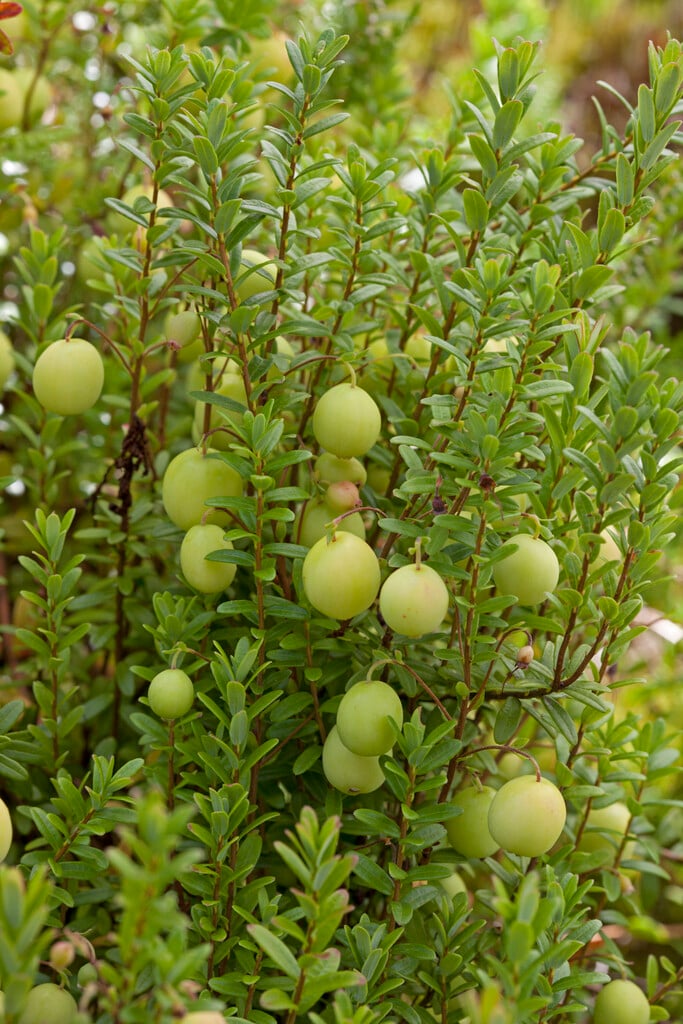Vaccinium macrocarpon (F)
American cranberry
A prostrate, mat-forming, evergreen shrub that is well suited to boggy garden conditions, with dark green foliage that turns bronze in winter and bell-shaped, pink flowers appearing in summer followed by edible red fruits in autumn
Size
Ultimate height
0.1–0.5 metresTime to ultimate height
10–20 yearsUltimate spread
0.1–0.5 metresGrowing conditions
Moisture
Well–drained, Moist but well–drainedpH
AcidColour & scent
| Stem | Flower | Foliage | Fruit | |
| Spring | Green | |||
|---|---|---|---|---|
| Summer | Pink | Green | ||
| Autumn | Green | Red | ||
| Winter | Bronze |
Position
- Full sun
- Partial shade
Aspect
East–facing or North–facing or South–facing or West–facing
Exposure
Exposed or Sheltered Hardiness
H6Botanical details
- Family
- Ericaceae
- Native to GB / Ireland
- No
- Foliage
- Evergreen
- Habit
- Spreading branched
- Genus
Vaccinium can be evergreen or deciduous shrubs or small trees, with simple leaves and small, bell- or urn-shaped flowers followed by juicy, sometimes edible berries
- Name status
Correct
- Plant range
- North America
How to grow
Cultivation
Grow in full sun to partial shade in moist but well drained acidic soil. Suited to boggy conditions, keep moist all year. See blueberry cultivation
Propagation
Propagate by taking softwood cuttings in late spring or semi-ripe cuttings in early summer
Suggested planting locations and garden types
- Ground cover
- Edible fruit
Pruning
Prune after harvesting to stimulate the production of vigorous uprights that will bear more fruit. Remove deadwood. See pruning blueberries
Pests
May be susceptible to caterpillars
Diseases
May be susceptible to honey fungus (rarely), powdery mildews, root rot and chlorosis due to iron and manganese deficiency; see nutrient deficiencies
Love gardening
Sign up to receive regular gardening tips, inspiration, offers and more
View our Privacy Policy
Get involved
The Royal Horticultural Society is the UK’s leading gardening charity. We aim to enrich everyone’s life through plants, and make the UK a greener and more beautiful place.

